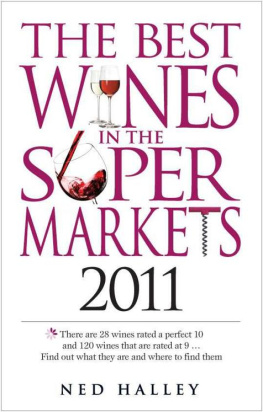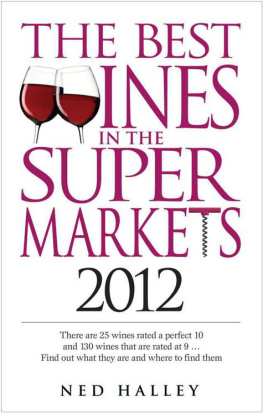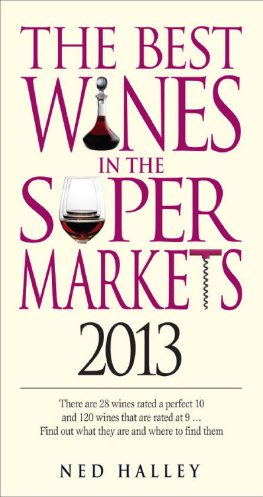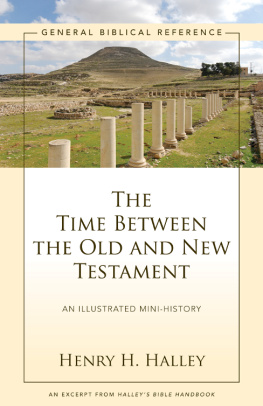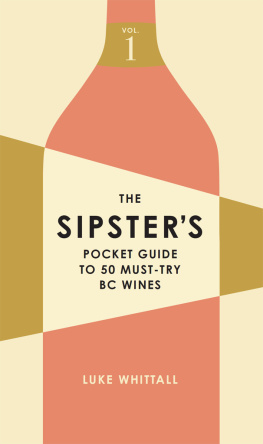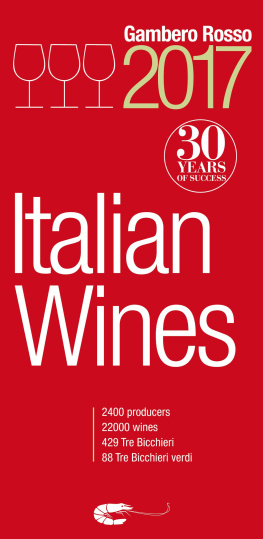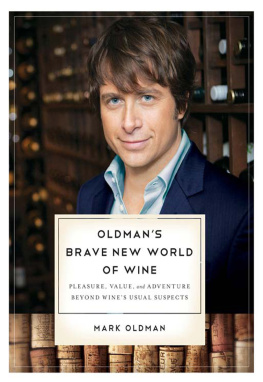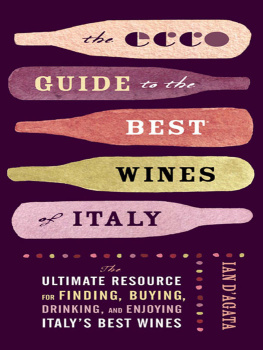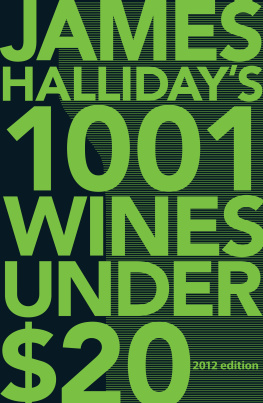
Table of Contents
Relative Values

I must start this new edition with an explanation of my scoring system. All the wines described are rated on a scale of 0 to 10. I write these numbers down alongside my notes when tasting, and most of the wines scoring 8 or more are included in this book. But these marks are principally an indicator of relative value. I'm not trying to suggest that Sainsbury's non-vintage House Ctes du Rhne at 3.69, which I have given 10 because I think it's unbeatable of its kind at the price, would be preferable to Marks & Spencer's St Aubin 1er Cru Les Charmois 2006 at 17.99, which scores 9. What I'm saying is that if all I had to spend was 3.69 I would not hesitate to spend it on the Sainsbury's bargain, while I would be slightly more equivocal (only very slightly, mind you) about blowing my last 17.99 on the M&S burgundy.
Am I making sense? The point about The Best Wines in the Supermarkets is that it is a guide to what is actually there, on the shelf. I'm working on the principle that most customers are shopping on a budget. What's the best value for the money you have? That's why the listings are arranged in ascending price order. You use this book by looking up the supermarket of your choice, and under that heading check out the wine offering, which is arranged by colour, then nation by nation. Each wine is described as well as marked, so you know not just how much I liked it, but why.
All the wines mentioned are recommended. If they score 6 or 7, as a small number do, it means I have liked the wine but have doubts about the price, or believe that while the wine is not entirely to my own taste, I can see it might appeal to others. A score of 8 signifies a very good wine at a fair price and a score of 9 indicates special quality and value. Those that earn 10 out of 10 are, obviously enough, the wines I don't think can be bettered for the money.
The choice of wines at every price level in most supermarkets is overwhelming. Although the business is dominated by global brands - the likes of Arniston Bay, Echo Falls, Gallo and Hardys - the retail giants nevertheless continue to offer great numbers of alternative wines, even though they sell in small quantities by comparison. And they persist, too, with 'premium' wines, as bottles costing upwards of 7 are known in the trade, even though sales of these account for less than five per cent of the total retail market.
For those of us who enjoy the diversity of wine, it's a great mercy. The supermarkets are blamed, quite rightly, for the demise of the high-street merchants who used to offer the best ranges, so the least they can do is compensate us for this loss by offering decent selections of their own.
At this, some of the chains are doing very well indeed. In 2010, I have been mightily taken with the growing variety of 'own brand' wines that are exclusive to the retailer in question. Marks & Spencer leads the way here, because its entire range is sold under its own labels. Many of the wines are made by or under the supervision of M&S experts, and no other chain comes close in this respect.
Own-label ranges elsewhere are nevertheless impressive. This year Tesco celebrates ten years of its 'Finest' range, now extending to 100 different wines, and at the celebration tasting held in July, I could only wonder at the width of the diversity and the depth of quality. Asda, meanwhile, is being much garlanded in the annual awards schemes for its 'Extra Special' wines, which have introduced a distinctive new level of interest into an own-label range formerly renowned more for utilitarian value than anything else.
It is Sainsbury's, oddly enough, that has been the most creative at the value end of the market this year. Its brand new 'House' range, launched in the stores in June 2010, comprises about 20 different reds, whites and ross, all non-vintage and starting at the unbelievably low price, for the Soave, of 3.29. Most are under 4 and the quality is consistently high across the range - and in some cases exceptional. It is, I suppose, a reflection of the hard times faced by wine producers - demand for cheaper wine has slumped during this long recession - in dealing with ruthless UK supermarkets, but from the similarly hard-pressed consumer's point of view it is surely very welcome indeed.
Bargain wines are being squeezed. With the present punitive excise duty on still wine of 1.61 per 75cl plus the VAT at 17.5% (rising to 20% in January 2011), just on the duty, the bottle price now starts at 1.89 before you get anything at all. Trade estimates put the minimum packaging and transport costs per bottle at 62p, and the typical retail margin at 25 per cent, which puts the value of the wine in a 3.99 bottle at 48p, a 4.99 bottle at 90p, a 5.99 bottle at 1.61, and a 6.99 bottle at 2.32.
Bearing in mind that wines costing under 7 account for just over 95 per cent of total retail sales, it's a wonder that the business is as important to supermarkets as it clearly is. And in spite of everything, the trade is growing. We continue to spend more on wine year by year, in spite of continuing economic gloom. True, most of the increased spend goes to the Treasury in tax revenues, and the rise in wine consumption coincides with a dramatic fall in beer sales, but it does look as if wine is here to stay, whatever the taxman, the health lobby and the Association of Chief Police Officers might say or do to eliminate it.
Which leads me to the curious question of the minimum pricing of alcoholic beverages. It's a policy idea credited to the Scottish Parliament, which so far has been unable to raise a majority of members' votes in favour, in spite of its averred purpose of pricing liquor beyond the reach of Scotland's legion problem drinkers. It is still, however, a live issue for the Westminster government, whose former Chief Medical Officer Sir Liam Donaldson has espoused the cause. Sir Liam, who took up his very substantial NHS pension entitlement in the summer of 2010, has vowed to continue in his retirement to campaign for minimum pricing until the measure becomes law.
Wine lovers should perhaps contemplate the potential consequences of the policy Sir Liam so avidly supports. The principle of minimum pricing - let's call it MP for short - is this: all alcoholic drinks are rated in 'units', each of 1 centilitre of ethanol, or pure alcohol. Licensed retailers will be told they cannot sell any alcoholic drink at a price below X per unit. The figure mooted is 50p.
Sir Liam has pointed out that some alcoholic beverages currently retail for as little as 11p per unit. White cider, super-strength lagers, tonic wines and the like could thereby be hiked in price by a factor of up to five. Maybe problem drinkers would still try to find the money, but the bottom would soon fall out of the market. The offending products would no longer be viable.
How would this policy affect the price of wine? You might be surprised. A standard 75cl bottle at 12.5 per cent alcohol by volume (abv), typical for European wines, contains 9.375 units. To conform to MP it would therefore have to cost at least 4.69. A bottle at 14 per cent abv, common among New World wines, has 10.5 units, taking the MP up to 5.25.
There will, obviously, be no impact on wines already priced above these levels. But for wine lovers on more modest budgets - and that's most of us - it's a chilly prospect. The average price paid for a bottle of wine for drinking at home in Britain is currently about 4.30. In supermarkets, where we buy seven out of every ten bottles, it's nearer 4.10.
Next page
